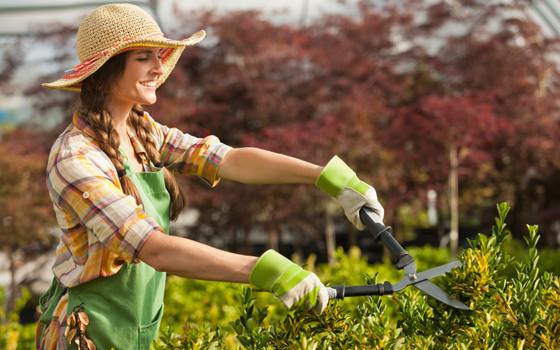- MENU
- HOME
- SEARCH
- WORLD
- MAIN
- AFRICA
- ASIA
- BALKANS
- EUROPE
- LATIN AMERICA
- MIDDLE EAST
- United Kingdom
- United States
- Argentina
- Australia
- Austria
- Benelux
- Brazil
- Canada
- China
- France
- Germany
- Greece
- Hungary
- India
- Indonesia
- Ireland
- Israel
- Italy
- Japan
- Korea
- Mexico
- New Zealand
- Pakistan
- Philippines
- Poland
- Russia
- South Africa
- Spain
- Taiwan
- Turkey
- USA
- BUSINESS
- WEALTH
- STOCKS
- TECH
- HEALTH
- LIFESTYLE
- ENTERTAINMENT
- SPORTS
- RSS
- iHaveNet.com: Home & Garden

Pruning Tips for Trees and Shrubs
by Lauren Caster
You may not be skilled enough to trim your shrubs into the shape of a dinosaur a là Edward Scissorhands, but you should at least know the basics when it comes to pruning your trees and bushes. While pruning can keep your tree growing strong and healthy and looking great, the wrong snip could have dire consequences. Thankfully, it's a fun and simple process, but the best way to prune is to follow these steps.
Proper Pruning
First, you need to know how to safely prune a branch. The trick is to leave as much bark intact as possible, so you'll need to avoid leaving stubs or tearing branches. If you're working with a heavy branch, start by cutting the branch into thirds so it doesn't all collapse on you when you finish cutting.
Then make the final cut right below the branch collar, which is where the branch connects to a larger branch or the trunk (you will notice the extra growth where it attaches). Make sure you cut downwards, along the angle of the branch collar, but leave the collar intact.
Keep in mind that pruning a young tree is very different from pruning an older tree. First of all, you shouldn't do any pruning in the first year of a tree or shrub's life. It's during this time that the tree develops its growing habits -- including which branches will support its growth for its lifetime. So you don't want to accidentally cut off the tree's best chance at long-term health and survival.
The next several years are crucial in the pruning of a tree, whether you're looking for health or shape. The main idea here is to keep space between the permanent, strong branches, and to prune dead branches, as well as those that grow at a tight angle to the trunk.
These tight-angle branches can lead to excess bark growing between the trunk and branch, making the branch weak and vulnerable to breaks. Try to keep pruning to a minimum, but getting rid of excess branches taking up space between the permanent branches will lead to the most growth and a great look.
When to Prune
Pruning should only be done once a year -- and the time to do it depends on what you're looking for. If you're pruning for shape and appearance, summer is the best time to get to work. The trees are fully leaved, so it's easy to see the shape of the tree and to trim it to your liking. Summer is also the easiest time to find dead branches that need to be removed, because they will not have leaves.
If you are pruning for the tree's growth and health, winter is the best season. If you prune dingu the tree's dormant season, it will know to apportion its energy out to the non-pruned branches, helping new growth around the healthiest parts of the tree. And if you're not too worried about knowing exactly what the tree will look like with leaves, it is much easier to prune without those leaves obstructing you. Certain trees like maples and elms will bleed sap when cut in the winter, though, making it a sticky job, perhaps best left for warmer weather.
Pruning almost feels like an art, because it's about intuition: After spending a little time with trees, you can see which branches are healthy and aid growth, and which are dying or in the way of other, stronger branches. But as long as you prune correctly and don't leave tears or stubs, your tree will grow better every year.
Lauren Caster is a New York City-based writer with a green thumb who has worked for the Brooklyn Botanic Garden. In addition to tending to her massive balcony herb garden, she contributes to Brooklyn Exposed, writing articles about secret gardens and all things Brooklyn. She's also a ghostwriter, assisting business luminaries pen books on theory, strategy and management systems
AUTOS | HOBBIES | EDUCATION | FAMILY | FASHION | FOOD & RECIPES | HOME DECOR | RELATIONSHIPS | PARENTING | PETS | TRAVEL | WOMEN
Article: Copyright ©,
Home & Garden: "Pruning Tips for Trees and Shrubs"